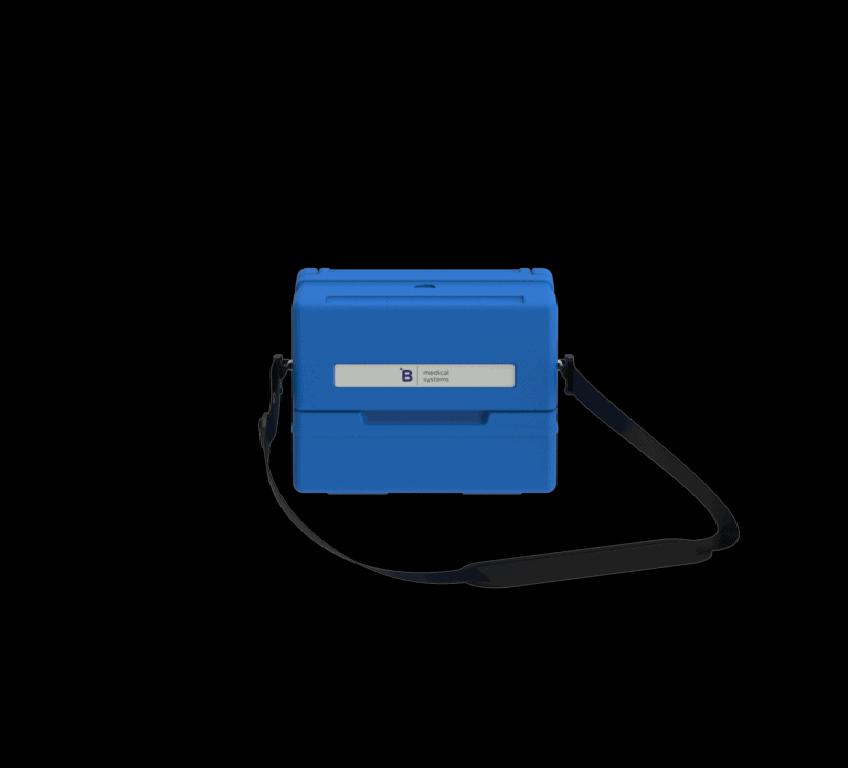Sterilization and Quality Control
Sterilization and Quality Control: Ensuring Safe Blood Storage with Blood Sample Transport Containers

Blood banking is a critical component of modern healthcare, facilitating life-saving transfusions and various medical procedures. Ensuring the safety and integrity of stored blood is paramount to prevent the transmission of infections and maintain the quality of blood products. This article explores the methods used to sterilize blood containers used in blood bank and the rigorous quality control measures in place to ensure safe blood storage.
Sterilization of Blood Sample Transport Containers
Sterilization is the process of killing or removing all forms of microorganisms, including bacteria, viruses, and fungi, from surfaces, liquids, or other objects. In the context of blood sample transport containers, sterilization is an essential step to prevent contamination and maintain the purity of blood samples. Several methods are employed to achieve this critical goal:
1. Steam Sterilization (Autoclaving): Autoclaving is one of the most common methods used to sterilize blood sample transport containers. It involves subjecting the containers to high-pressure steam at temperatures typically ranging from 121°C to 134°C. The combination of high temperature and pressure effectively kills all microorganisms and their spores. This method is widely favored for its reliability and cost-effectiveness.
2. Ethylene Oxide (EtO) Sterilization: Ethylene oxide gas is another effective method for sterilizing blood sample transport containers. It is particularly useful for materials that cannot withstand the high temperatures of autoclaving. EtO gas penetrates porous materials and effectively kills microorganisms. However, the process can be time-consuming, and proper aeration is necessary to remove residual gas, which can be toxic.
3. Gamma Radiation Sterilization: Gamma radiation is a form of ionizing radiation that is used to sterilize a variety of medical products, including blood sample transport containers. It damages the DNA of microorganisms, rendering them incapable of replication. This method is well-suited for single-use disposable containers but requires specialized facilities and equipment.
4. Chemical Sterilization: Chemical sterilization methods involve the use of liquid or gas chemical agents to kill microorganisms. Common agents include hydrogen peroxide vapor and peracetic acid. These methods are effective but require careful handling of potentially hazardous chemicals.
Quality Control Measures in Blood Sample Transport Containers
Ensuring the quality and safety of blood sample transport containers is a multifaceted process that involves stringent quality control measures. These measures are designed to verify the effectiveness of the sterilization process and the integrity of the containers. Key quality control steps include:
1. Biological Indicator Testing: To validate the effectiveness of sterilization, biological indicators, such as spore strips containing bacterial spores, are often placed inside the containers during the sterilization process. These indicators are then tested for microbial growth to confirm that the sterilization process was successful.
2. Physical Inspection: Visual and physical inspection of blood sample transport containers is conducted to check for defects or damage that could compromise their integrity. This includes assessing seals, closures, and any potential signs of contamination.
3. Package Integrity Testing: Leak testing is performed to ensure that the containers are sealed properly and free from defects that might allow contamination. This can involve submerging the containers in a liquid solution and checking for any leaks.
4. Documentation and Traceability: Strict record-keeping is essential to track each batch of blood sample transport containers, including details of the sterilization process, dates, and results of quality control tests. This traceability is crucial for tracking and responding to any issues that may arise.
5. Regulatory Compliance: Blood sample transport containers must adhere to stringent regulatory standards, such as those set forth by the Food and Drug Administration (FDA) in the United States or similar agencies in other countries. Compliance ensures that the containers meet safety and quality requirements.
6. Environmental Monitoring: Blood banks and facilities that handle blood sample transport containers often conduct ongoing environmental monitoring to detect any potential sources of contamination in the facility itself. This includes monitoring air quality and surface cleanliness.
7. Employee Training: Ensuring that personnel handling blood sample transport containers are well-trained in aseptic techniques and safety protocols is critical. Employees must understand the importance of maintaining sterility and following established procedures.
The Role of Blood Sample Transport Containers
Blood sample transport containers play a pivotal role in maintaining the integrity of blood samples from the moment they are collected until they reach the testing laboratory or blood bank. These containers are designed to prevent contamination, preserve the quality of samples, and ensure accurate test results. Key features and considerations include:
1. Leak Resistance: Blood sample transport containers must be leak-resistant to prevent any spillage or contamination during transit. This is particularly important for samples that may contain infectious agents.
2. Biohazard Labeling: Containers used for transporting blood samples are often labeled with biohazard symbols and warnings to alert personnel to the potential risks associated with handling them.
3. Temperature Control: Some blood samples, such as those for certain lab tests or research, may require specific temperature control during transport. Specialized containers with temperature-monitoring capabilities may be used for these purposes.
4. Sterility Maintenance: The sterility of blood sample transport containers is paramount. Any breach in sterility could compromise the accuracy of test results and potentially put healthcare workers at risk.
5. Compatibility: Blood sample transport containers need to be compatible with the types of tests being conducted. For example, containers for blood cultures need to be designed to accommodate culture bottles securely.
In conclusion, sterilization and quality control are integral components of ensuring safe blood storage and transportation through blood sample transport containers. These measures are essential to prevent contamination, maintain sample integrity, and safeguard the health of patients and healthcare workers. Rigorous testing, documentation, and compliance with regulatory standards are crucial to achieving these goals, ultimately contributing to the effectiveness of blood banking and transfusion services in healthcare systems worldwide.






